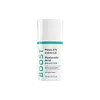What's inside
What's inside
 Key Ingredients
Key Ingredients

 Benefits
Benefits

 Concerns
Concerns

No concerns
 Ingredients Side-by-side
Ingredients Side-by-side

Water
Skin ConditioningGlycerin
HumectantSodium Hyaluronate
HumectantHyaluronic Acid
HumectantCeramide NP
Skin ConditioningCeramide AP
Skin ConditioningCeramide EOP
Skin ConditioningPhytosphingosine
Skin ConditioningYeast Extract
Skin ConditioningAdenosine
Skin ConditioningCholesterol
EmollientPanthenol
Skin ConditioningSilanetriol
Butylene Glycol
HumectantSodium Lauroyl Lactylate
EmulsifyingCarbomer
Emulsion StabilisingXanthan Gum
EmulsifyingCitric Acid
BufferingSodium Hydroxide
BufferingPolysorbate 20
EmulsifyingEthylhexylglycerin
Skin ConditioningPhenoxyethanol
PreservativeWater, Glycerin, Sodium Hyaluronate, Hyaluronic Acid, Ceramide NP, Ceramide AP, Ceramide EOP, Phytosphingosine, Yeast Extract, Adenosine, Cholesterol, Panthenol, Silanetriol, Butylene Glycol, Sodium Lauroyl Lactylate, Carbomer, Xanthan Gum, Citric Acid, Sodium Hydroxide, Polysorbate 20, Ethylhexylglycerin, Phenoxyethanol
Squalane
EmollientHydrogenated Polyisobutene
EmollientIsoamyl Laurate
EmollientPolyethylene
AbrasiveSynthetic Wax
AbrasiveWater
Skin ConditioningPolymethyl Methacrylate
Butylene Glycol
HumectantSilica
AbrasiveGlycerin
HumectantLactococcus Ferment Lysate
Skin ConditioningPolyglyceryl-4 Diisostearate/Polyhydroxystearate/Sebacate
EmulsifyingPolyglyceryl-4 Isostearate
EmulsifyingCoco-Caprylate/Caprate
EmollientJojoba Esters
EmollientCitrus Medica Vulgaris Fruit Extract
AntioxidantPyrus Malus Fruit Extract
Skin ConditioningLactobacillus
Skin ConditioningLactobacillus Ferment
Skin ConditioningPolymnia Sonchifolia Root Juice
Skin ConditioningLactic Acid
BufferingAlpha-Glucan Oligosaccharide
CleansingProline
Skin ConditioningSodium Hyaluronate
HumectantRice Amino Acids
Skin ConditioningBeta Vulgaris Root Extract
Skin ConditioningInulin
Skin ConditioningCaffeine
Skin ConditioningTheobroma Cacao Seed Extract
AntioxidantChenopodium Quinoa Seed Extract
Skin ConditioningCurcuma Longa Root Extract
MaskingVaccinium Angustifolium Fruit Extract
Skin ProtectingHydrolyzed Soy Protein
HumectantPolyglyceryl-3 Polyricinoleate
EmulsifyingHelianthus Annuus Seed Wax
Skin ConditioningAcacia Decurrens Flower Wax
EmollientMaltodextrin
AbsorbentPolyglycerin-3
HumectantSodium Lactate
BufferingCaesalpinia Spinosa Fruit Extract
Skin ProtectingLens Esculenta Fruit Extract
Skin ConditioningSorbitan Isostearate
EmulsifyingHydrolyzed Adansonia Digitata Seed Extract
Kappaphycus Alvarezii Extract
Skin ConditioningTocopherol
AntioxidantTocopheryl Acetate
AntioxidantXanthan Gum
EmulsifyingSodium Chloride
MaskingDisteardimonium Hectorite
StabilisingCaprylic/Capric Triglyceride
MaskingSodium Phytate
Sodium PCA
HumectantHexylene Glycol
EmulsifyingCaprylyl Glycol
Emollient1,2-Hexanediol
Skin ConditioningPhenoxyethanol
PreservativeSodium Benzoate
MaskingPotassium Sorbate
PreservativeSqualane, Hydrogenated Polyisobutene, Isoamyl Laurate, Polyethylene, Synthetic Wax, Water, Polymethyl Methacrylate, Butylene Glycol, Silica, Glycerin, Lactococcus Ferment Lysate, Polyglyceryl-4 Diisostearate/Polyhydroxystearate/Sebacate, Polyglyceryl-4 Isostearate, Coco-Caprylate/Caprate, Jojoba Esters, Citrus Medica Vulgaris Fruit Extract, Pyrus Malus Fruit Extract, Lactobacillus, Lactobacillus Ferment, Polymnia Sonchifolia Root Juice, Lactic Acid, Alpha-Glucan Oligosaccharide, Proline, Sodium Hyaluronate, Rice Amino Acids, Beta Vulgaris Root Extract, Inulin, Caffeine, Theobroma Cacao Seed Extract, Chenopodium Quinoa Seed Extract, Curcuma Longa Root Extract, Vaccinium Angustifolium Fruit Extract, Hydrolyzed Soy Protein, Polyglyceryl-3 Polyricinoleate, Helianthus Annuus Seed Wax, Acacia Decurrens Flower Wax, Maltodextrin, Polyglycerin-3, Sodium Lactate, Caesalpinia Spinosa Fruit Extract, Lens Esculenta Fruit Extract, Sorbitan Isostearate, Hydrolyzed Adansonia Digitata Seed Extract, Kappaphycus Alvarezii Extract, Tocopherol, Tocopheryl Acetate, Xanthan Gum, Sodium Chloride, Disteardimonium Hectorite, Caprylic/Capric Triglyceride, Sodium Phytate, Sodium PCA, Hexylene Glycol, Caprylyl Glycol, 1,2-Hexanediol, Phenoxyethanol, Sodium Benzoate, Potassium Sorbate
Ingredients Explained
These ingredients are found in both products.
Ingredients higher up in an ingredient list are typically present in a larger amount.
Butylene Glycol (or BG) is used within cosmetic products for a few different reasons:
Overall, Butylene Glycol is a safe and well-rounded ingredient that works well with other ingredients.
Though this ingredient works well with most skin types, some people with sensitive skin may experience a reaction such as allergic rashes, closed comedones, or itchiness.
Learn more about Butylene GlycolGlycerin is already naturally found in your skin. It helps moisturize and protect your skin.
A study from 2016 found glycerin to be more effective as a humectant than AHAs and hyaluronic acid.
As a humectant, it helps the skin stay hydrated by pulling moisture to your skin. The low molecular weight of glycerin allows it to pull moisture into the deeper layers of your skin.
Hydrated skin improves your skin barrier; Your skin barrier helps protect against irritants and bacteria.
Glycerin has also been found to have antimicrobial and antiviral properties. Due to these properties, glycerin is often used in wound and burn treatments.
In cosmetics, glycerin is usually derived from plants such as soybean or palm. However, it can also be sourced from animals, such as tallow or animal fat.
This ingredient is organic, colorless, odorless, and non-toxic.
Glycerin is the name for this ingredient in American English. British English uses Glycerol/Glycerine.
Learn more about GlycerinPhenoxyethanol is a preservative that has germicide, antimicrobial, and aromatic properties. Studies show that phenoxyethanol can prevent microbial growth. By itself, it has a scent that is similar to that of a rose.
It's often used in formulations along with Caprylyl Glycol to preserve the shelf life of products.
Sodium Hyaluronate is hyaluronic acid's salt form. It is commonly derived from the sodium salt of hyaluronic acid.
Like hyaluronic acid, it is great at holding water and acts as a humectant. This makes it a great skin hydrating ingredient.
Sodium Hyaluronate is naturally occurring in our bodies and is mostly found in eye fluid and joints.
These are some other common types of Hyaluronic Acid:
Learn more about Sodium HyaluronateWater. It's the most common cosmetic ingredient of all. You'll usually see it at the top of ingredient lists, meaning that it makes up the largest part of the product.
So why is it so popular? Water most often acts as a solvent - this means that it helps dissolve other ingredients into the formulation.
You'll also recognize water as that liquid we all need to stay alive. If you see this, drink a glass of water. Stay hydrated!
Learn more about WaterXanthan gum is used as a stabilizer and thickener within cosmetic products. It helps give products a sticky, thick feeling - preventing them from being too runny.
On the technical side of things, xanthan gum is a polysaccharide - a combination consisting of multiple sugar molecules bonded together.
Xanthan gum is a pretty common and great ingredient. It is a natural, non-toxic, non-irritating ingredient that is also commonly used in food products.
Learn more about Xanthan Gum